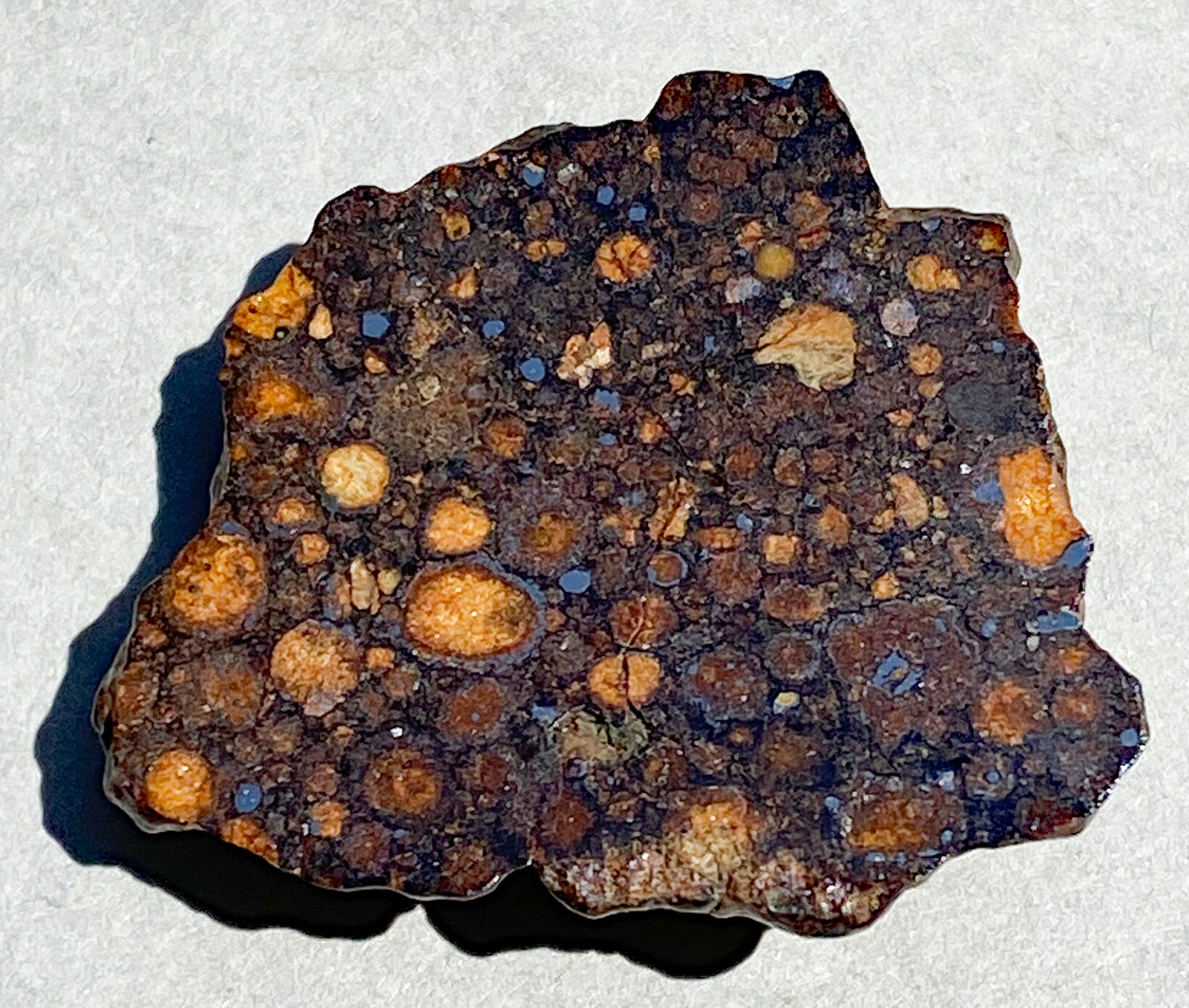|
Roll Overs:
1
2
3
4
|

|
|
Copyright (c) See Contributor Comments, below.
|
7.55 gram end-cut. CR2
TKW 5 kg. Fall not observed. Purchased 2001, Zagora, Morocco.
  
Scott writes:
From MetBull:
The Renazzo (CR) chemical group of carbonaceous chondrites are distinguished by large, abundant porphyritic chondrules (0.7 mm, 50 vol%), many of which have igneous rims, few refractory inclusions, abundant metal (5-8 vol%), and fine-grained matrix that is commonly hydrated (up to 50 vol%). Petrography: (G. Benedix and C. Smith, NHM) The thin section studied is dominated by millimeter-sized Type I PO and POP chondrules, which are often rimmed with and/or contain metallic Fe-Ni blebs. Metallic Fe-Ni also occurs as rounded, millimeter-sized grains within the matrix. Interstitial to chondrules and metal is a fine-grained matrix rich in phyllosilicate. Two Type II chondrules were also observed. Pervasive veins of rust occur throughout.
I love armored chondrules, which are chondrules surrounded by metal or metal sulfide, often appearing like a shell. There are different theories about how they are created, including vapor deposition during transit or perhaps as material expelled during chondrule solidification. CR2’s have armored chondrules and NWA 801 has lots of them!
The first picture was taken in bright sunlight as NWA 801 tends to be fairly dark. The second picture was taken in the shade, with the sky reflected in the metallic portions to highlight the armored chondrules. Note the variation in thickness and the “dotted” particle rings versus solid.
The third and fourth pictures provide scale. Acquired from Marcin Cimala of PolandMet Meteorites—thanks Marcin, this little guy is one of my favorites!
Pictures 1 and 2 are copyright by Scott McGregor and may be freely used with attribution
Pictures 3 and 4 are copyright by Marcin Cimala and are included with permission |
Click to view larger photos
#1
#2
#3
#4
|
Found at the arrow (green or red) on the map below
|
|
| |
Paul Swartz
5/30/2022 11:08:06 AM |
Scott - picture order is fixed. |
Twink Monrad
5/30/2022 11:01:32 AM |
So pretty, and as I have said before a novice might look at outside and say- I have seen lots of brown rocks with pieces of quartz showing through! At least that happens here in SO. ARIZONA, takes a lot of convincing some people that there is a big difference! I am off today to do this very thing, as a man send me a photo of a sixteen by twelve by 6 inch brown "meteorite" which he has. If I am wrong you all will be the first to know! |
Scott McGregor
5/30/2022 10:35:02 AM |
The pics are accidentally reversed-- be sure to compare #4 with #3 to see the armor! |
John Divelbiss
5/30/2022 9:47:20 AM |
A favorite of many collectors! This end cut is awesome. |
jim brady
5/30/2022 5:44:29 AM |
nice example, thanks guys |
| |
|